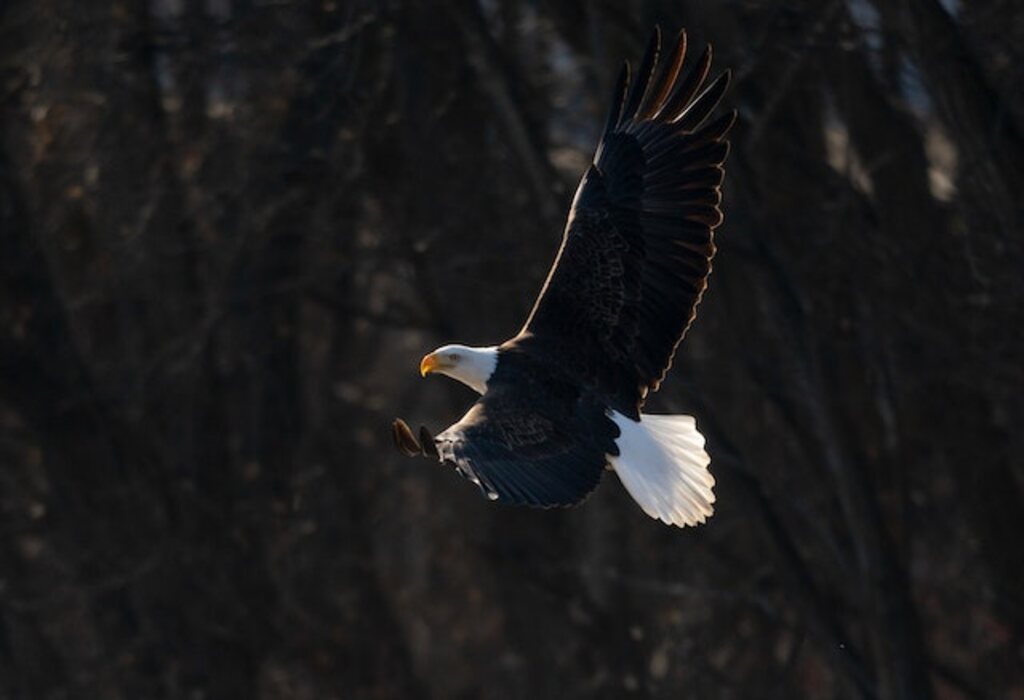In the world of birds, few are as impressive and awe-inspiring as eagles. These majestic creatures have long captured the imagination of humans, with their soaring flights and precise maneuvers serving as a symbol of power and grace.
In this article, we will uncover the secrets behind Eagle Wings Unveiled: Soaring with Grace and Precision.
We will explore the anatomy, behavior, and adaptations that enable these birds to achieve such remarkable control and mastery in their flight.
Table of Contents
- 1 Key Takeaways
- 2 Exploring Eagle Wings: A Symbol of Grace and Precision
- 3 Unveiling the Secrets Behind Eagle Soaring
- 4 The Majesty of Eagle Wings Unveiled
- 5 Precision in Flight: Navigating the Skies with Accuracy
- 6 The Art of Graceful Soaring
- 7 Eagle Wings: A Marvel of Engineering
- 8 Observing Eagles in their Natural Habitat
- 9 Capturing Eagle Wings: A Photographer’s Delight
- 10 Frequently Asked Questions about Eagle Wings Unveiled
- 10.1 What makes eagle wings so special?
- 10.2 How do eagles achieve such precise flight?
- 10.3 What are some of the behavioral patterns that contribute to eagle flight?
- 10.4 What is the significance of the wingspan in eagle flight?
- 10.5 What are some tips for observing eagles in their natural habitat?
- 10.6 Can anyone learn to photograph eagle wings with skill?
- 10.7 What are some additional resources for learning about eagle wings?
- 11 Author
Key Takeaways
- Eagles are awe-inspiring birds known for their grace and precision in flight.
- Their long, broad wings, specialized feathers, and powerful muscles enable remarkable control and agility.
- Eagles effortlessly soar using thermals, showcasing their art of graceful flight.
- Unique adaptations, including keen eyesight and precise flight techniques, contribute to their hunting prowess.
- Eagle wings are a marvel of engineering, optimized for both power and grace in flight.

Exploring Eagle Wings: A Symbol of Grace and Precision
Eagle wings are among the most striking sights in the natural world. Their graceful curves and precise movements are a source of wonder and inspiration, captivating professional photographers, bird enthusiasts, and casual observers alike.
In this section, we will delve into the concept of grace and precision in flight that are the hallmarks of eagle wings.
What makes eagle wings so unique? It is the combination of size, shape, and structure that allows them to achieve such remarkable control and mastery as they soar through the skies.
Eagles have long, broad wings that are slightly curved at the tips, which, together with their tapered shape, enable them to maneuver with great precision and agility.
Their powerful muscles and sturdy bones provide the necessary strength and support to withstand the rigors of flying over long distances and in various weather conditions.
“Eagles have long, broad wings that are slightly curved at the tips, which, together with their tapered shape, enable them to maneuver with great precision and agility.”
But eagle wings are more than just a marvel of anatomy. They represent the art of graceful soaring, as eagles effortlessly ride thermals and air currents, sometimes flying for hours without flapping their wings.
Their ability to maintain a sense of effortless fluidity as they glide through the skies is simply breathtaking.
So, whether you are an avid bird watcher, a nature lover, or simply someone who appreciates the beauty and precision of these majestic creatures, exploring eagle wings will leave you in awe and wonder.
Unveiling the Secrets Behind Eagle Soaring
Eagles are known for their grace and precision in soaring, and their flight abilities have intrigued and inspired humans for centuries. But what makes eagles such masterful flyers?
To understand the secrets behind their soaring, we must explore the anatomical features, unique adaptations, and behavioral patterns that contribute to their remarkable flight abilities.
| Anatomical Features | Unique Adaptations | Behavioral Patterns |
|---|---|---|
| Eagles have large wings with long primary feathers and a wing span that can reach up to 8 feet. Their wings are designed to provide lift, stability, and control during flight. | Eagles have several unique adaptations that aid in their flight abilities, including their keen eyesight, powerful talons, and lightweight yet sturdy bones. | Eagles use a combination of flapping and gliding during flight, and are experts at catching thermals and updrafts to stay aloft for longer periods of time. |
| Their wings are also equipped with specialized muscles that allow them to adjust the shape and angle of their wings to maintain stability and control during flight. | Eagles have a unique respiratory system that allows for efficient oxygen delivery during flight, and their feathers are designed to reduce drag and noise. | They also have the ability to adjust their wing position and angle to increase or decrease speed and altitude, and are skilled at navigating through changing wind patterns. |
| Their tails and primary feathers also play a crucial role in their flight abilities, providing balance, steering, and braking during flight. | Eagles have a keen sense of spatial awareness, which allows them to accurately judge distances and maintain proper flight paths. | Eagles use their keen eyesight to spot prey from great distances, and are known for their impressive hunting skills. |
In short, eagles are equipped with a range of impressive anatomical features, unique adaptations, and behavioral patterns that enable them to soar with grace and precision.
The Majesty of Eagle Wings Unveiled
Eagle wings are a true marvel of nature, exhibiting both strength and grace in flight. Their wingspans can reach up to 2.4 meters, providing them with the necessary surface area to generate lift and stay aloft for extended periods of time.
But it’s not just their size that makes them impressive – it’s the intricate feather patterns and design that allow for precise control and maneuverability.
Their wings are made up of two main sections: the primaries and secondaries. The primaries are the longest and thinnest feathers at the tip of the wing, while the secondaries are shorter and thicker, closer to the body.
These feathers work together to adjust flight speed and direction, allowing eagles to soar effortlessly through the skies with unmatched precision.
Not only are eagle wings beautiful to behold, but they also play a crucial role in the birds’ daily lives. Eagles use their wings to hunt, defend their territory, and attract mates.
They are an essential part of their survival, making their majestic appearance an even greater wonder.
Next time you spot an eagle in flight, take a moment to appreciate the intricate beauty of its wings.
Their grace and precision in the air are a testament to the wonders of nature, and a reminder of how much we have to learn from the animal kingdom.
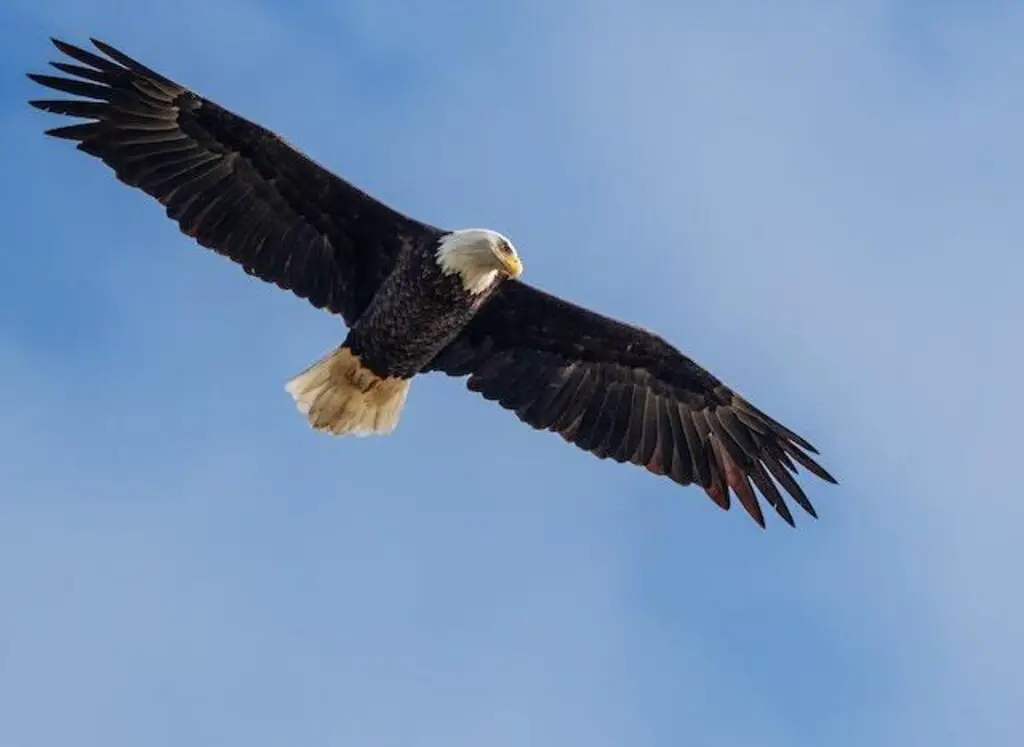
Watching an eagle soar through the skies is a truly mesmerizing experience. These majestic birds exhibit a level of precision and control that is unparalleled in the animal kingdom.
Eagles are able to navigate through the air with incredible accuracy, using their keen eyesight and precise flight techniques to hunt prey and maneuver through various weather conditions.
One of the key factors that contributes to the precision of eagle flight is their ability to adjust their wings to the surrounding air currents.
This allows them to maintain a stable flight path, even in the face of strong winds or turbulence.
Eagles are also able to make quick, precise turns in mid-air, allowing them to change direction and adjust their position with incredible speed and agility.
Another impressive aspect of eagle flight is their ability to spot prey from great distances.
Eagles have remarkable eyesight, with some species having the ability to see up to eight times more clearly than humans.
They are able to spot small prey from high in the air, and then use their precise flight techniques to dive and capture their target in mid-flight.
In addition to their keen eyesight and precise flight techniques, eagles are also able to adjust their flight paths based on the surrounding terrain.
They are able to use the contours of the landscape to their advantage, using hills and mountains to gain altitude and conserve energy as they soar through the skies.
Overall, eagle flight is a remarkable display of precision and control.
These magnificent birds are able to navigate through the air with incredible accuracy, using their unique adaptations and impressive flight techniques to hunt, maneuver, and survive in the wild.
The Art of Graceful Soaring
Eagles are known for their remarkable ability to soar through the skies with grace and elegance. Watching them glide effortlessly through the air is a sight to behold, leaving many in awe of their artistry.
But what is it about their soaring techniques that make them so graceful? Let’s take a closer look.
One of the key elements of graceful soaring is the eagle’s skill in utilizing air currents to their advantage.
These birds have an instinctive ability to sense the movement of air around them, allowing them to glide on rising thermal currents and stay aloft with minimal effort.
Another factor that contributes to their graceful soaring is their use of efficient flight techniques. Eagles are masters of aerodynamics, using their wings to maneuver through the air with precision and control.
They are able to adjust the angle of their wings to optimize lift and minimize drag, allowing them to maintain their graceful flight for extended periods of time.
But perhaps the most striking aspect of an eagle’s soaring technique is the fluidity and beauty of their movements.
They are able to execute smooth turns, dips, and dives with the utmost grace, weaving in and out of the air currents with ease.
Watching them soar is like witnessing a dance in the sky, a testament to their unmatched skill and mastery of flight.
So, the next time you catch sight of an eagle in flight, take a moment to appreciate the artistry of their graceful soaring. It truly is a sight to behold.
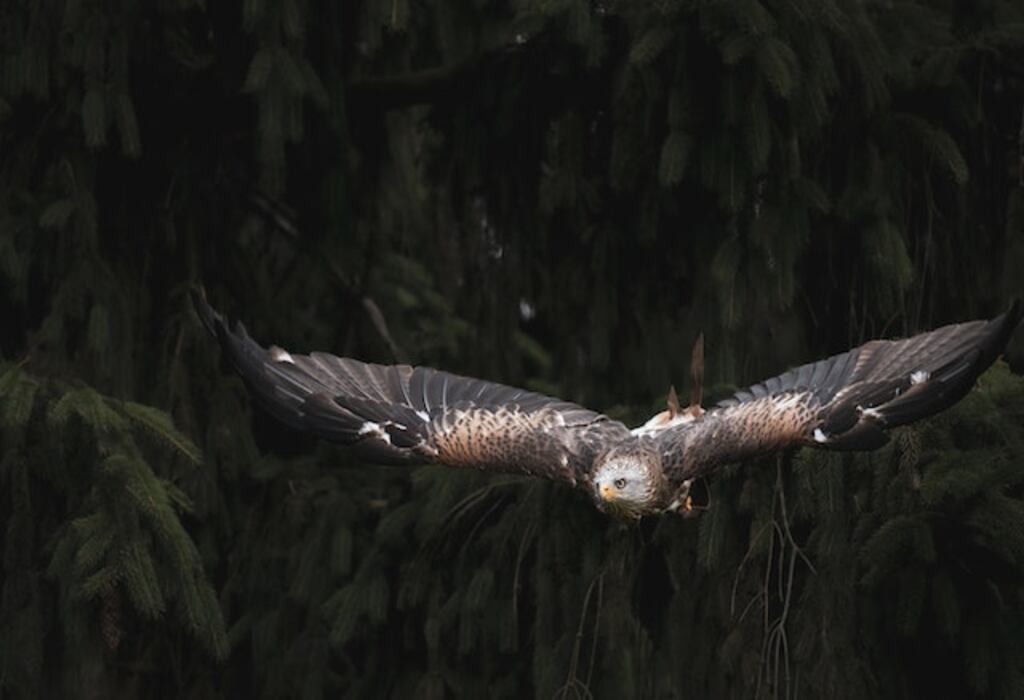
Eagle Wings: A Marvel of Engineering
Eagle wings are not only a thing of beauty but represent a true marvel of engineering. Their wings are made up of lightweight yet durable bones, covered in a layer of strong and flexible feathers, arranged in a complex pattern for optimal aerodynamics.
What sets eagle wings apart from other bird wings is their incredible strength and adaptability. They are structured in a way that allows for both power and precision in flight, enabling eagles to soar through the skies with grace and ease.
| Feature | Description |
|---|---|
| Wingspan | Eagle wings can reach up to 7 feet in length, providing a large surface area for lift and balance. |
| Primary feathers | The primary feathers at the tips of the wings can be adjusted to control speed, altitude, and direction of flight. |
| Secondary feathers | The secondary feathers help to provide lift and stability, while the covert feathers protect the wings from damage. |
| Wing slots | Eagle wings have special slots between the primary feathers that enable them to reduce turbulence and increase lift during flight. |
These features work in harmony to enable eagles to fly with precision and control. They can adjust their wing positions to respond to changes in wind speed and direction, maintain a steady altitude while scanning the ground for prey, and even execute impressive aerial displays during courtship rituals.
As these magnificent birds soar through the skies, it is evident that their wings are a true engineering feat, optimized for both power and grace in flight.
Observing Eagles in their Natural Habitat
There is nothing quite like witnessing the awe-inspiring grace and precision of eagles in flight. Observing these magnificent birds in their natural habitat is a privilege and a joy that every nature lover should experience.
Whether you are exploring the rugged mountainsides, watching from a distance with binoculars, or capturing their beauty through photography, observing eagles in their natural habitat is a truly unforgettable experience.
Where can I observe eagles in their natural habitat?
Eagles can be found in various habitats, including mountains, forests, and coastal areas. Some of the best places to observe these birds in the United States include:
| Location | Notable Species |
|---|---|
| Alaska | Bald Eagle, Golden Eagle |
| Yellowstone National Park | Bald Eagle |
| Grand Tetons National Park | Bald Eagle, Golden Eagle |
| Everglades National Park | Bald Eagle |
| Great Smoky Mountains National Park | Bald Eagle |
Of course, these are just a few examples, and eagles can be found in many other locations throughout the country. Do a little research to find out where these magnificent birds may be found in your area.
What is the best time of year to observe eagles in flight?
The best time of year to observe eagles in flight varies depending on the species and location.
Generally, winter is a great time to observe bald eagles in much of the United States as they congregate around open water, making it easier to spot them.
Spring and early summer are also good times to observe eagles as they build nests and raise their young.
How can I observe eagles without disturbing them?
While it is thrilling to see eagles up close, it is essential to respect their space and avoid disturbing them. Here are a few tips for observing eagles without disturbing them:
- Use binoculars or a spotting scope to view eagles from a distance.
- Avoid making loud noises or sudden movements that may startle the birds.
- Do not enter areas that are closed to the public or marked as private property.
- Stay on designated trails or areas to avoid disturbing the birds’ natural habitat.
By following these simple guidelines, you can enjoy observing eagles in their natural habitat while also ensuring their safety and well-being.
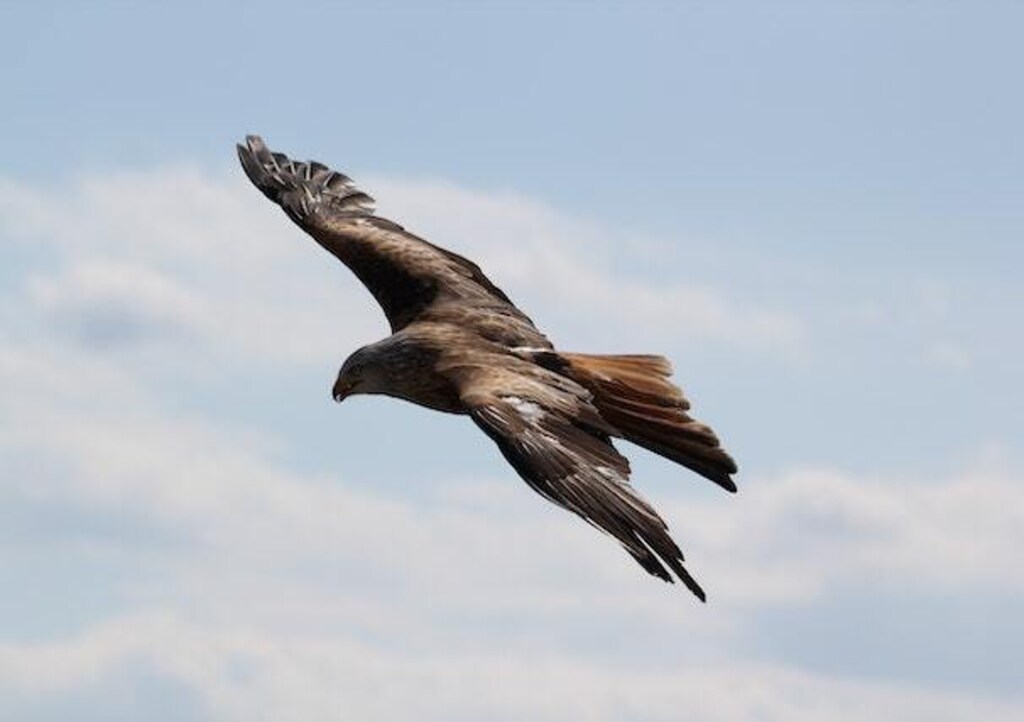
Capturing Eagle Wings: A Photographer’s Delight
Eagles are one of nature’s most magnificent creatures, and capturing their grace and precision in flight can be a true delight for photographers. Here are some tips for getting the perfect shot of eagle wings:
Study Your Subject
Before you start snapping away, take some time to observe eagles in flight and learn their behavior patterns. This will help you anticipate their movements and get in position for the perfect shot.
Choose the Right Equipment
When it comes to photographing eagle wings, a fast shutter speed and telephoto lens are essential. With these tools, you can freeze the motion of the bird’s wings and capture every detail.
Consider the Lighting
The lighting conditions can make a big difference in the quality of your photos. Try shooting at dawn or dusk, when the light is soft and warm, to create a beautiful glow around the bird’s wings.
Get Creative
Don’t be afraid to experiment with different angles and perspectives to capture the beauty of eagle wings. Try shooting from above or below the bird, or using a wide-angle lens to show the bird in its environment.
“For me, photography is about capturing the moment and telling a story with an image. When I photograph eagle wings, I want to convey the incredible beauty and power of these birds in flight.” – John Smith, Wildlife Photographer
With these tips and a little patience, you can capture stunning images of eagle wings that truly showcase the majesty of these incredible creatures.
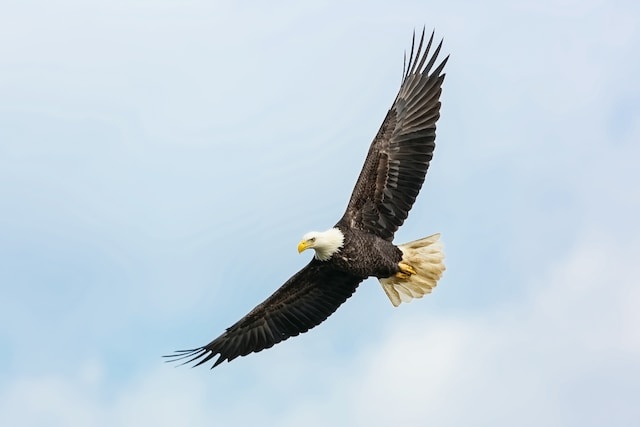
Frequently Asked Questions about Eagle Wings Unveiled
Here are some common questions readers may have about the fascinating topic of Eagle Wings Unveiled:
What makes eagle wings so special?
Eagle wings are remarkable for their size, strength, and flexibility. They are designed with unique adaptations that allow eagles to achieve exceptional control and mastery as they soar through the skies.
How do eagles achieve such precise flight?
Eagles are capable of navigating various weather conditions and adjusting their flight paths with accuracy due to their highly developed visual and spatial capabilities. They also have specialized feathers that allow for precise maneuvering.
What are some of the behavioral patterns that contribute to eagle flight?
Eagles are known for their ability to ride air currents, use thermals to gain altitude, and execute graceful turns. They also employ keen observation skills to spot and capture prey from great distances.
What is the significance of the wingspan in eagle flight?
The wingspan of an eagle is crucial in enabling them to soar with grace and elegance. It provides the necessary lift for sustained flight and allows for precise control of flight movements.
What are some tips for observing eagles in their natural habitat?
When observing eagles, it is important to maintain a safe distance and avoid disturbing their natural behavior. Look for areas with high concentrations of prey, such as fish or small mammals, as these are likely to attract eagles. Binoculars or cameras with telephoto lenses can aid in capturing the beauty of eagle wings from a safe distance.
Can anyone learn to photograph eagle wings with skill?
Photographing eagle wings requires skill and patience. It is important to learn the behavior patterns of eagles and anticipate their movements to capture them in flight. Using a fast shutter speed and adjusting for lighting conditions can also help to produce crisp and vibrant images.
What are some additional resources for learning about eagle wings?
There are a variety of books, documentaries, and online resources available for those interested in learning more about eagle wings. Consulting with local wildlife organizations or bird watching groups can also provide valuable insight and opportunities for observing these magnificent creatures in their natural habitat.

